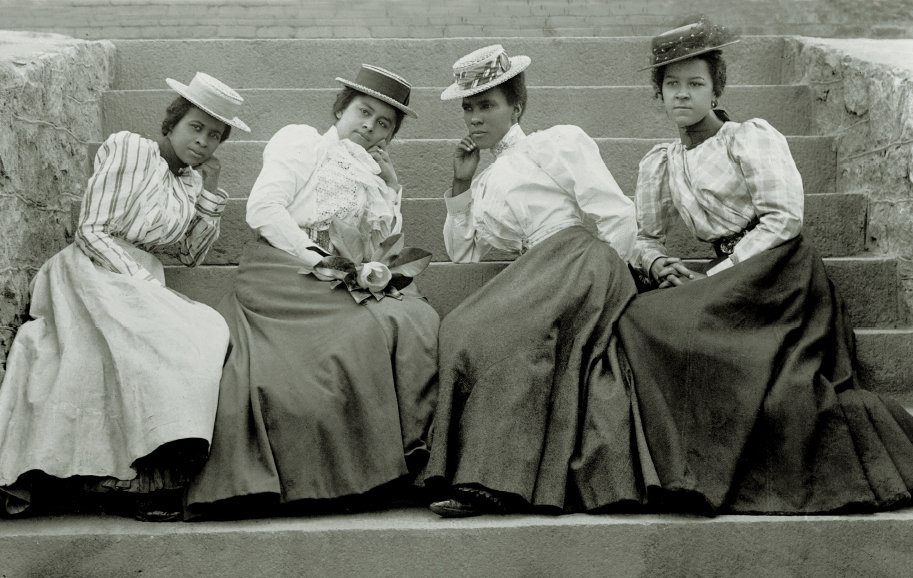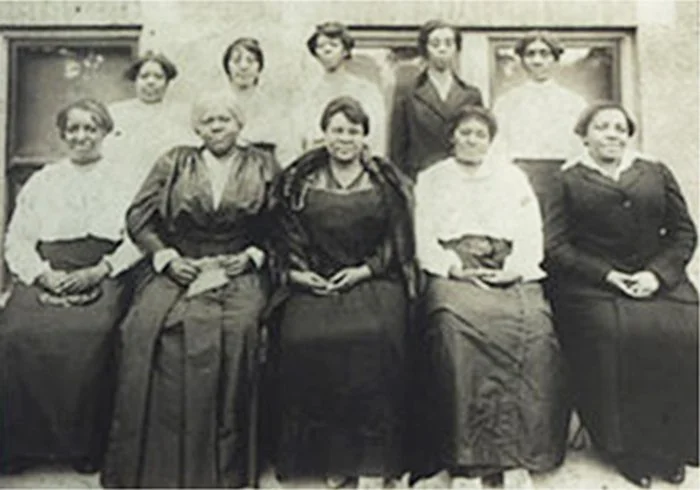
Ida B. Wells’ Treatise and
The Reason Why…
Ida B. Wells with her children.
Title page of The Reason Why (Wells-Barnett 1893).
The National Association of Colored Women's Clubs founders and some members pictured. Ida B. Wells-Barnett is second from the left in the front row.
Ida B. Wells-Barnett, 1862—1931
Anti-lynching activist and journalist Ida B. Wells-Barnett (1862—1931) headed up a group of writers who delivered a scathing protest about the lack of Black representation at the 1893 World’s Fair. Wells would leave a singular legacy behind as a journalist and activist, and her activism at the 1893 Fair was only one of many accomplishments.
Born enslaved in Mississippi, Wells’ career included activism around woman’s suffrage, anti-lynching, and civil rights. Wells arrived in Chicago in 1892 after fleeing Memphis, Tennessee, where her impassioned journalism on local lynchings enraged white supremacists. Published as a pamphlet entitled “Southern Horrors: Lynch Law in All Its Phases,” the articles provided coverage of this mob violence and a challenge for justice: “It is with no pleasure I have dipped my hands in the corruption here exposed. Somebody must show that the Afro-American race is more sinned against than sinning, and it seems to have fallen upon me to do so” (Wells 1892:3). Wells next turned her attention to Chicago.
The Reason Why the Colored American Is Not in the World’s Columbian Exposition: The Afro-American’s Contribution to Columbian Literature (1893)
“Many Americans saw the World’s Fair in opposition to utopia: it was a city that reflected and instantiated the dominant racial, gender, and class hegemonies in the United States, with exhibits of an America whose benefits were not dispersed equally and with promises of a future that maintained this status quo. After witnessing the concerted efforts by all levels of the exposition planners to deny African Americans representation in the exposition, Ida B. Wells wrote that the exclusion of African American leaders from planning stages at the Fair created, ‘literally and figuratively, a “White City,” in the building of which the Colored American was allowed no helping hand, and in its glorious success he has no share’ (Wells-Barnett 1893:79). Wells and coauthors Frederick Douglass, Irvine Garland Penn, and Ferdinand Lee Barnett sought to bring attention to that institutionalized racism in their 1893 pamphlet, ‘The Reason Why the Colored American Is Not in the World’s Columbian Exposition’ (Wells-Barnett 1893)” (Graff 2020:58).
You can read the full text of this work here.
Wells married Ferdinand Lee Barnett in 1895, and continued her activism as she built her family, including children Charles, Herman, Ida Jr., and Alfreda. Many of her descendants have continued her work, as have several generations of activists and scholars whom she inspired.
For Further reading
There is an enormous amount of academic scholarship and public dissemination of this important work by Wells. This includes the work done or supported by the Ida B. Wells Foundation, run by her grandchildren. Below are some of the many resources that provide more detailed insight into Wells and her life, and how this work at the 1893 Fair continues to resonate for so many.
Additional Writings by Ida B. Wells:
1895. The Red Record: Tabulated Statistics and Alleged Causes of Lynching in the United States.
1899. Lynch Law in Georgia.
1970. Crusade for Justice: The Autobiography of Ida B. Wells. Alfreda M. Duster, ed. Chicago: University of Chicago Press.
The Ida B. Wells Papers, 1884—1976, are held at the University of Chicago Library’s Hanna Holborn Gray Special Collections Research Center.
< Previous Page | Next Page >


